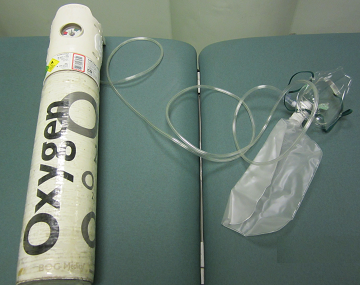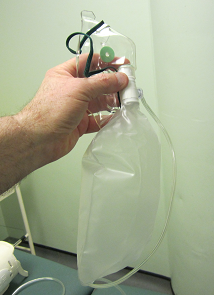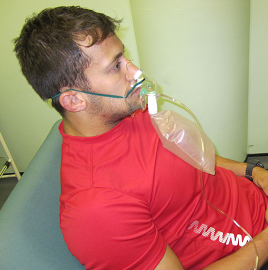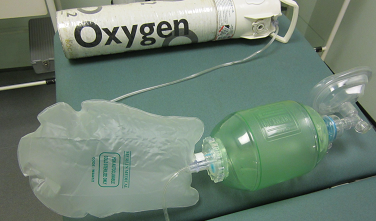Oxygen
Oxygen is vital to maintain body functions. Key organs of the body requiring oxygen are the brain and the heart. The brain will sustain a significant hypoxic injury if there is more than a 3 minute period without a supply of oxygen, trauma which interrupts the supply of oxygen to vital organs can have devastating consequences.
Oxygen should be considered for all patients with significant trauma and for serious medical emergencies.

Administration
Oxygen is administered via a non-rebreathemask, the reservoir bag needs to be filled before being administered to the patient. To fill the bag, you connect the mask to the oxygen cylinder with the tubing, turn the cylinder flow valve to 15 litres per minute and hold a finger over the valve of the mask as shown to fully inflate the bag.

Using a non-rebreathe mask allows minimal rebreathing of expired air, and delivers approximately 85 % oxygen at a flow rate of 8 litres per minute when applied correctly.
Place the mask over the patients nose and mouth and the elastic round the back of the head. If the patient is breathing adequately the mask will ‘fog’. The reservoir bag should refill between breaths. If this is not the case increase the oxygen flow rate up to the maximum of 15 litres per minute.

In certain emergency situations assisted ventilation is required using a bag-valve-mask device with supplemental oxygen.

Contraindications for the use of oxygen
There are few contraindications for the use of oxygen.
For patients with Chronic Obstructive Pulmonary Disease, oxygen in high concentrations is potentially deleterious, however it is unlikely high levels of oxygen within the first hour of trauma or serious illness will cause significant side effects.